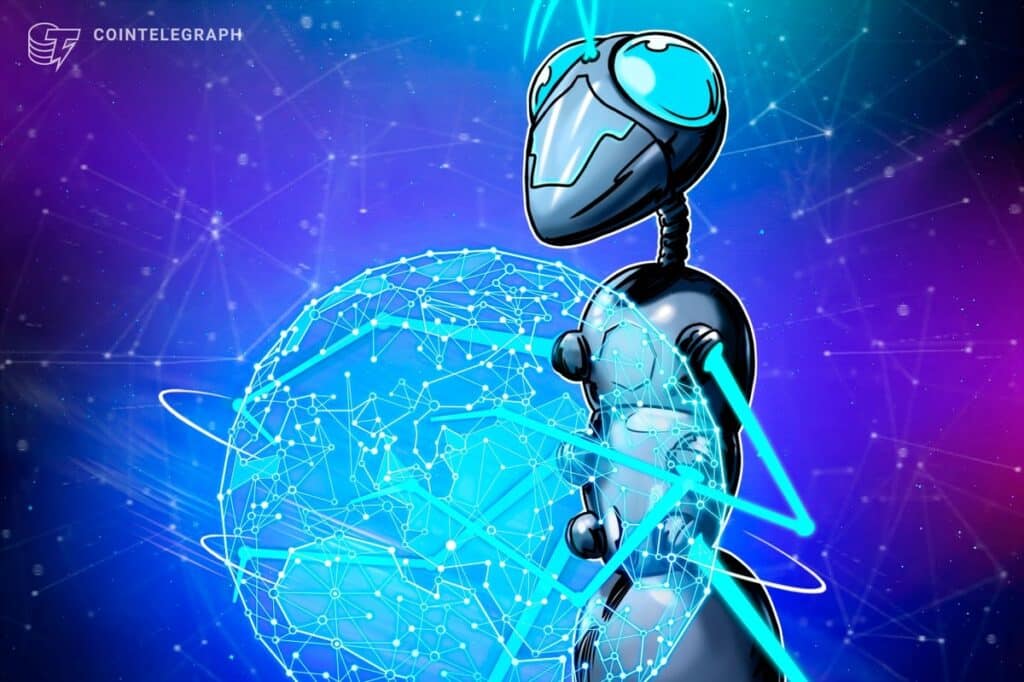Increasing blockchain adoption by putting technology on the back end

Understanding the difference between the front end and back end of Web3 technology is critical. The term “front end” describes the part of Web3 applications that consumers interact with directly. This includes user-facing technologies, websites and decentralized applications (DApps).
On the other hand, the back end refers to the complex system that supports these Web3 applications. Everything from distributed ledgers and smart contracts to consensus protocols is covered here.
However, accessibility and simplicity are essential to Web3 adoption. When the technical complexities of Web3 become too obvious up front – such as managing cryptographic keys or understanding blockchain concepts – it can alienate a large segment of potential users. It is important to make the user experience and interaction smooth and easy to understand so that the end user does not have to worry about the technical details.
By prioritizing accessibility and simplicity, Web3 technology can be more inviting to a variety of users. This approach helps bridge the gap between early adopters familiar with blockchain technology and the broader mainstream audience.
Harrison Hines, CEO of Fleek and founder of the Web3 app development platform, told Cointelegraph, “Simplicity and accessibility have been key to recent mainstream growth for computers, smartphones, mobile apps and AI. Hiding the technical complexities on the back end follows the same logic. Developers are also end users, and need tools/infrastructure that are easy to use.
Advantages of hiding Web3 in the backend
User experience can be improved by making blockchain-based applications easier to navigate. Users can engage with Web3 applications in a manner similar to using traditional web applications, while avoiding the technical complexities associated with blockchain technology and cryptographic keys. This streamlined experience encourages users to explore and adopt Web3 applications without being intimidated by their complexity.
Simple board operation for non-technical users
The onboarding process is straightforward and individuals unfamiliar with blockchain technology can quickly get started with Web3 applications. This approach reduces the learning curve and enables a wider and more diverse user base without requiring a deep understanding of the technical aspects of Web3.
For example, Immutable Passport simplifies the onboarding process for WagMI protected users by providing a straightforward and password-free registration experience. With just a few taps, users can create an account, eliminating the need for password management. In conjunction, Passport forms a non-tight wallet in the background, providing secure storage for users' digital assets.
Magazine: Breaking into Liberland: Hiding Guards with Inner Tubes, Decoys and Diplomats
Authentication options have been tweaked, allowing users to choose from popular methods such as Google, Apple or email logins.
Passport's interactive feature allows for seamless logins across all games and marketplaces in an ever-changing ecosystem.
This approach ensures a user-friendly experience, especially for those new to Web3 technologies. According to the Web3 game franchise WAGMI Games, this feature allows more players to board.
Kostas Kristaloudis, director of games development at WAGMI, told Cointelegraph, “Simplifying the onboarding process for non-technical users is critical to mainstream adoption of Web3 technology. Most individuals have little patience for complex, technical communications.
Kroustaloudis continued, “In fact, with each additional click or tap someone takes to achieve their goal, the likelihood of uninstalling an app increases. This is especially important when introducing players to new titles. The difference between success and failure can often be determined by taking one more click away.
Attracting more users and developers
Keeping Web3 technology on the back end helps bridge the gap between early adopters and end users, expanding the Web3 user base beyond tech savvy and blockchain enthusiasts. Because Web3 applications are indistinguishable from their traditional counterparts in terms of user experience, they are more likely to attract users who hesitate to explore the technology due to complexities.
According to some experts, making it easier to build back-end applications that hide Web3 components can attract more developers and bring more Web3 applications to market.
“The main benefit is making it easier and more accessible for more developers to build applications using Web3 technologies in their backends,” said Fleck Hines.
Hines continued, “It's just a numbers game. The more developers you build Web3-powered applications, the more likely (and faster) mainstream adoption you'll have to achieve those improved success applications. It's the same thing we've seen happen with Web2 and Mobile. Finding new Web3 applications that users love encourages others to try them.
Reducing user errors and risks
Web3 technology's back-end hiding has the added benefit of reducing user errors and risks. If users are not exposed to technical complexities, they are less likely to make critical mistakes, such as mishandling encryption keys or engaging in insecure transactions.
This is especially important in decentralized financial applications, where small mistakes can lead to significant financial losses.
Reducing user errors and risks
One notable example of a back-end Web3 implementation is the Ethereum Name Service (ENS). ENS allows users to replace long cryptic Ethereum addresses with human-readable domain names.

This technology can be integrated into applications, providing a seamless experience for users. Users can send to “john.eth” instead of “0x4cbe58a94d991087fa2dc648b1e33f55dbb53f4f2”, making transactions vulnerable to errors.
Coinbase uses cb.id usernames, an ENS domain, to facilitate cryptocurrency transfers and user interaction. These usernames are tied to the NS infrastructure, simplifying complex wallet addresses by providing a human-readable option.
Additionally, cb.id usernames redirect web users directly to web3 profiles at profile.coinbase.com.
When it comes to blockchain gaming, WAGMI Games is another example. Its WAGMI Defense mobile app uses a free-to-play business model and has a proven user experience. Players start by getting a free basic card set. Let's say a player wants to participate in more challenging games with a chance to earn higher rankings and rewards. In that case, you can buy NFT tokens with real money, similar to traditional apps.
While the block serves as the basis for the game's technology, players interact with the game through a traditional interface. This design can reduce the perceived complexity and difficulty of using blockchain and NFT features, making them accessible to a wider audience.
Practical advice
One key focus for developers looking to create user-friendly and seamless Web3 applications is to implement optimization strategies. Gas fees are a part of many blockchain transactions and can be a major hurdle for users.
Developers are addressing the gas payment problem by using layer-2 solutions such as state channels, diverting transactions from the main chain, reducing congestion and improving user experience, especially for DApps gaming.
Additionally, you can choose low-fee blockchains like BNB Smart Chain, Solana or Polkadot to create budget-friendly environments, especially for micro-transactions.
Kroustaloudis agreed, telling Cointelegraph, “Gas fees can be a significant barrier, especially in the context of applications that rely on microtransactions. Even a $0.10 gas bill, when it happens frequently, proves problematic. With the emergence of various new L2 chains such as Coinbase's BASE and Immutable's L2 solution, gas fees have ceased to be a concern.
“Depending on the nature of the application, choosing to build on Layers 2s will be an obvious choice to achieve mass adoption. To embark on this journey, developers must thoroughly research the needs of their target users and determine the most suitable gas optimization strategy for their project.”
Zero-Knowledge (ZK) technology, specifically ZK-rollups, reduces the burden on the main chain by grouping off-chain transactions into a single smart contract, providing faster confirmation times and lower fees. Developers can integrate ZK-rollups to make their apps more efficient and cost-effective while enhancing the user experience.
The latest: New York's MoMA now has works of art in its permanent collection
Developers should consider optimizing for mobile devices. Many users access Web3 applications on their smartphones, so making sure the app is mobile responsive and works seamlessly across different screen sizes and devices is critical to widespread adoption.
For users considering using Web3 applications, it is important to maintain awareness and knowledge about the technology. Web3 and blockchain are evolving rapidly, and being informed about the latest developments, security best practices, and user guidelines can help users make informed decisions about protecting their digital assets.












